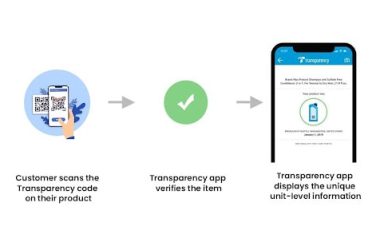Mobile phones are now the main source of website traffic, accounting for a significant 60.66% share in 2022. With the increasing number of users switching from desktop to mobile devices, businesses must implement mobile SEO optimisation strategies during website development. This article, authored by Mac Martin, an SEO expert in Reading, presents several effective techniques to optimise your website for mobile users fully.
Understanding SEO: SEO, or search engine optimisation, involves optimising a site to gain higher rankings in search engine results. It encompasses modifying the website’s structure and content to enhance visibility and improve search engine rankings. Additionally, SEO optimises pages for desktop and mobile viewing, providing excellent content and user experience. Implementing effective SEO practices will increase visibility, website traffic, and rankings on search engines.
Mobile SEO Optimisation Explained
Mobile SEO optimisation is optimising a website specifically for mobile devices to improve search engine rankings and user experience. This optimisation process includes making necessary changes to the website’s code, content, and design to ensure optimal performance on mobile devices. It is vital to focus on mobile optimisation to avoid poor search engine performance and provide a seamless user experience, leading to a lower bounce rate. To effectively optimise your website for mobile devices, consider implementing the following nine best practices:
Adopt a Responsive Design
In the mobile-first indexing era, creating a separate website solely for mobile devices is no longer necessary or recommended. Instead, opt for a responsive web design that adjusts seamlessly to different screen sizes. This approach ensures that your website appears optimally across all resolutions. Avoid using Flash, as mobile devices do not widely support it—transition to HTML5 video, which is more compatible with the mobile-first era.
Prioritise Above-the-Fold Content
While it is challenging to fit all important content above the fold on mobile devices, it is still essential to capture users’ attention. Engage visitors immediately with compelling text content, strategically placing clear call-to-action (CTA) buttons above the fold. Effective CTAs guide users through the sales funnel, encouraging them to act and explore your products or services further.
Emphasise Code over Images
Minimise the use of images, as they can slow down website loading times, particularly on mobile devices. Opt for code-based designs that create attractive layouts without compromising performance. The evolution of languages and tools in the mobile-first era facilitates the creation of visually appealing websites using code. If you must use images, resize them appropriately and use website-friendly formats like JPEG or PNG.
Address Text Size Issues
Use Google Search Console to identify areas where text sizes may be problematic for mobile viewing. Google provides audit tools that generate reports pinpointing pages or sections needing optimisation. This approach enhances both your search engine reputation and user experience.
Optimise Page Speed
Optimal page loading times are crucial for overall website performance and user satisfaction. Slow-loading websites lead to higher bounce rates. Consider implementing the following techniques to improve page speed:
Reduce HTTP Requests
Reduce the number of elements on each page, combining style sheets and using text instead of images where possible.
Use Content Delivery Networks (CDNs)
CDNs store cached versions of your website’s content on multiple servers, significantly improving page speed.
Enable Compression
Reduce file sizes to enhance loading speed by compressing files sent from your server.
Minify Resources
Remove unnecessary characters from source codes without altering functionality.
Leverage Browser Caching
Store specific web page resources on visitors’ computers, reducing the need to reload the entire page upon revisiting.
Tools like Lighthouse Metrics can help test page speed and evaluate mobile friendliness.
Consider All Visitors
When making decisions about web content, consider the needs of all users across various screen sizes. Designing separate versions for desktop and mobile users is outdated. Instead, adopt a holistic approach ensuring your decisions cater to every screen size, optimising mobile and desktop experiences.
Leverage Mobile Optimisation Tools
Using a content management system like WordPress, leverage mobile optimisation tools and plugins to simplify the optimisation process. Plugins like WPtouch, Smush, and AMP help minify HTML and CSS, making them more compatible with small screens. These tools can significantly improve your mobile SEO optimisation strategy.
Mindful Use of Ads and Interstitials
While ads are integral to digital marketing, it is essential to take care when incorporating them into your mobile website. Pop-up ads and interstitials can disrupt the user experience and obstruct the main content due to limited screen space. Limit intrusive content to areas of the site that minimise disruption and prioritise user experience.
Conduct Quality Testing
Quality assurance testing is a crucial aspect of website development. Test your website across various devices to ensure optimal usability and identify errors or issues. Bugs that may go unnoticed on desktop versions can significantly impact mobile layouts. With the continuous increase in mobile traffic, prioritising quality testing guarantees the best user experience.
Conclusion
Optimising your site for mobile devices is no longer optional but imperative in the mobile-first era. Incorporating mobile SEO optimisation practices ensures improved search engine performance, increased visibility, and a seamless user experience. Implement the nine best practices mentioned above to optimise your website for mobile devices effectively.







